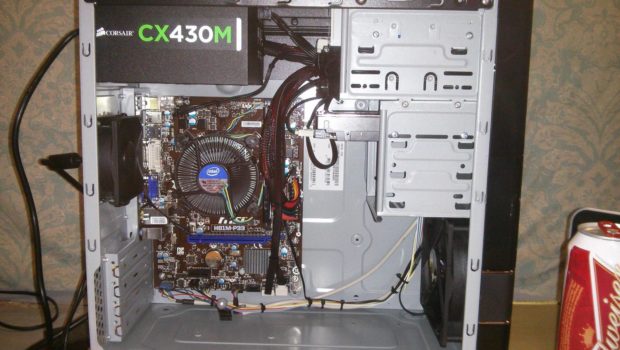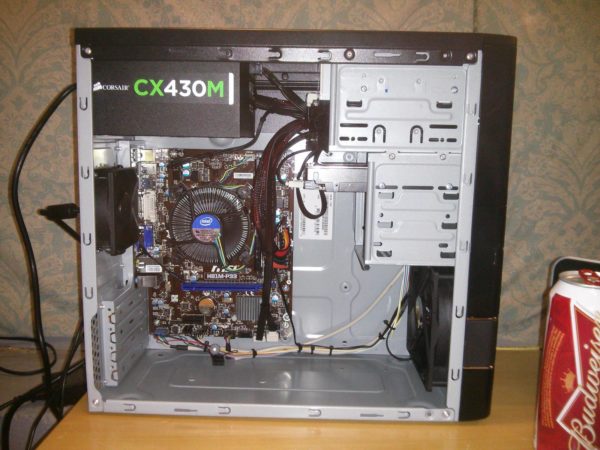How To Build A Gaming PC On Budget
Building a gaming PC yourself is a tedious task, especially when you’re on a budget. For those who are unacquainted with the world of PC building, it may seem that building a PC with decent specs costs you a kidney. I’m sad to proclaim that the reality isn’t far fetched from the imagined scenario. It isn’t the fact you can’t assemble a gaming PC within a budget of $400, no. It is our perception of a gaming PC itself. When we think about gaming PC, we think about ‘PC Master Race’, about 4k resolution and 120+ Frames Per Second, about shiny LEDs and liquid cooled cases. And that is what hikes the price of an ‘ideal’ gaming PC.
If you’re on a low budget, say less than $500, and need a gaming PC for nothing but playing games all day long, then it may be a good idea to opt for a console. However, a PC, even a rather cheap one, has many perks over a console, not to forget the sheer joy of building a PC from dust and witnessing its first boot-up.
So, here is how you can build a gaming PC within your budget.
First things first, determine what you’ll actually do on your gaming PC. Are you gonna play video games all day long or need it as a system for work by the day? Are you gonna use your gaming PC for rendering? The most important component of a gaming PC is the GPU while the most important component of a PC which is used for rendering is CPU.
Once you’ve decided the main purpose of your gaming PC, it’s time to move on to the budget itself. Old poppy used to say ‘The bigger the better’, a statement which suits flawlessly when you’re deciding the budget of your gaming PC.
Once you’ve pondered upon the main purpose of your gaming PC as well as its budget, here are a few money saving tips while building a gaming PC.
1. Plan out your components
PC Components, especially the high-end ones which are used in gaming PCs, tend to fetch a high price. It would be an absolute bummer if you spent a ton of money of purchasing the components only to find out that they are not compatible with each other. Or even worse, they are out of your budget.
PcPartPicker allows you to virtually build your PC, component by component. It will warn you if any of the selected components such as the motherboard, CPU and Power Supply Unit are incompatible with each other. But that’s just the beginning of it. The website also allows you to view and compare prices of different components across the various online retail channels. It also looks after recent price drops and current offers. The verified user ratings help you to finalize your choice of components.
2. Use what you already have
In one of our previous articles, we warned against using old and used components for your new builds. To summarize it in just a single sentence, old or used components may not be compatible with the new and upgraded components that you’ll use for your new PC.
However, some stuff like an HDD, fans and LEDs are compatible with pretty much every build. You may be able to use your old RAM, Power Supply Unit and a few other components as well, provided that they are compatible with your new build. PcPartPicker will help you out a ton for this. Moreover, you can also opt for used PC components. Coming across a suitable Power Supply Unit and Ram shouldn’t be difficult. Although, you must have a queer eye to make sure that the components you are purchasing are not faulty.
3. Do not ‘Future Proof’ your PC
Future Proofing your PC may be a good idea unless you’re on a budget, then it’s an absolutely crappy idea.
If you’re not going to use a lot of memory, or to put it in other words; open a lot of tabs in chrome, there is no need to spend the extra coin for a 16 GB RAM. An 8 GB will suffice for most of your needs.
One of the components that you can totally ditch nowadays is the Optical Drive as most of the software and games are available on the internet for downloading. Ditching an optical drive won’t save you a ton of money, $30 tops, but it will reduce redundant part.
You can always upgrade your PC by introducing new components in place of the old one in the future when you have a rather liberal budget. Future proofing your PC will hurt your budget. Make a gaming PC that suffices your current needs.
4. Save on Software
Windows in the OS of choice of PC gamers. But purchasing a Windows license from Microsoft will cost you no less than $100. You can try out the free open source Linux OS. But if you want to old school and stick to good old Windows, you can find sellers on Kinguin, which is a sort of eBay dedicated to software only, selling Authorised Windows licence for as low as $30.
Windows is just one of the many software that skim your budget. Try to avoid buying software that you won’t use more than once or twice. You can also opt for their free counterparts.
5. Skip the Aesthetics
Okay, before we dive in any further, I would like to clarify the fact that I’m one of the many that believe a gaming PC is made from those sexy cases and glowing LED fans.
But your PC dosen’t has to look good to perform good. You can save a ton of money by opting for simple cases and simple fans. The bottom line is that when you’re operating on a tight budget, you should opt for performance over aesthetics. Yet, if you’re hell-bound on having a fancy case, you can score one with under $50.
















